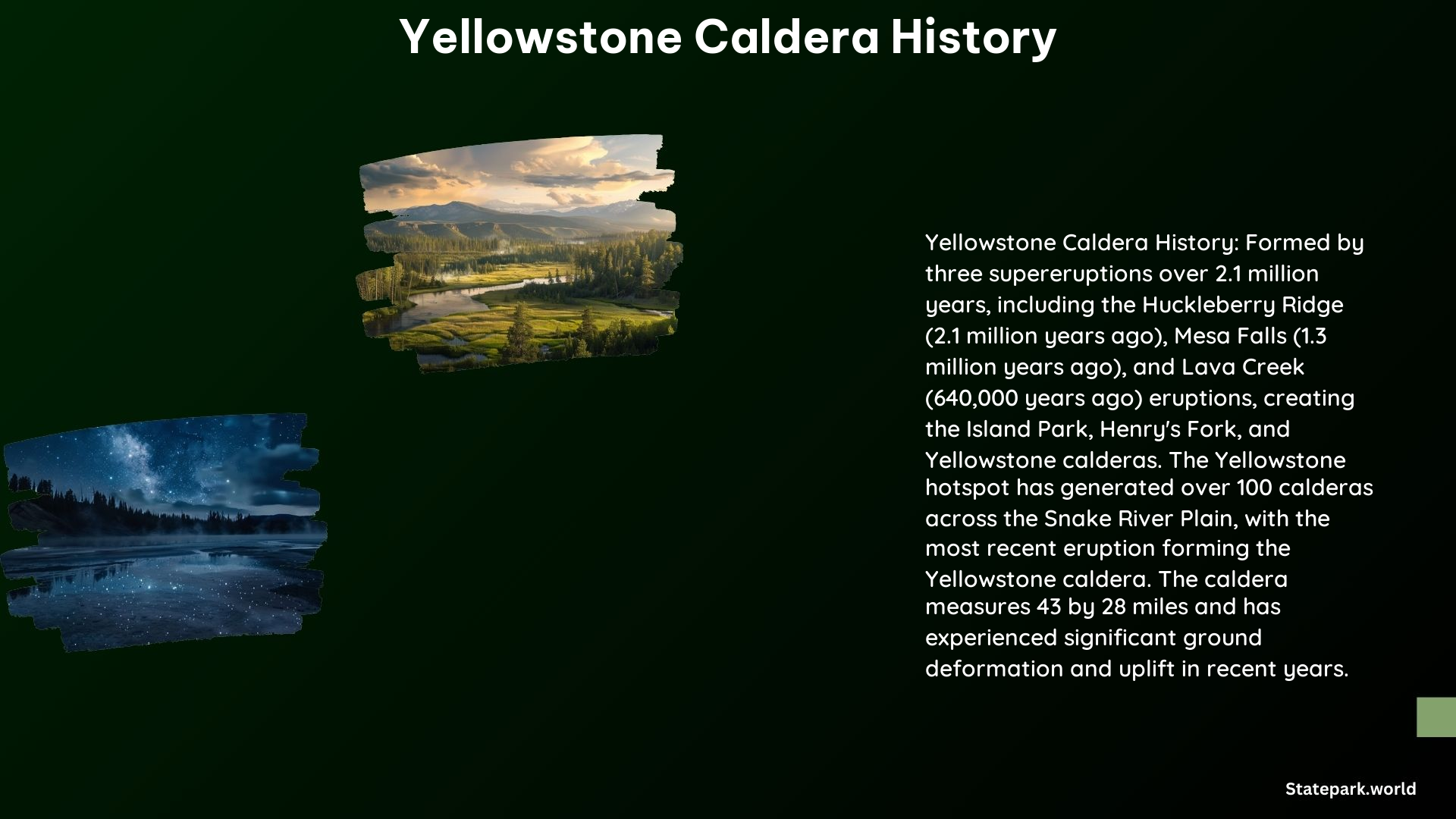The Yellowstone Caldera is a geological marvel that has captivated the minds of scientists and nature enthusiasts alike. This massive volcanic feature, located in the heart of Yellowstone National Park, has a rich and complex history that spans millions of years. In this blog post, we’ll delve into the formation, size, major eruptions, volcanic activity, and future prospects of the Yellowstone Caldera.
Formation and Size
The Yellowstone Caldera was formed by a massive volcanic eruption that occurred approximately 631,000 years ago. This eruption was so powerful that it created a caldera measuring 43 by 28 miles (70 by 45 kilometers) in size, making it one of the largest calderas in the world.
Major Eruptions

The Yellowstone Caldera has experienced three major eruptions in the past 2.1 million years, each of which has left a significant impact on the landscape and the surrounding region.
-
Huckleberry Ridge Eruption (2.1 million years ago): This eruption created the Island Park Caldera and the Huckleberry Ridge Tuff, which is the largest known volcanic eruption on Earth.
-
Mesa Falls Eruption (1.3 million years ago): This eruption created the Henry’s Fork Caldera and the Mesa Falls Tuff.
-
Lava Creek Eruption (640,000 years ago): This eruption created the Yellowstone Caldera and the Lava Creek Tuff.
Volcanic Activity
The Yellowstone Plateau volcanic field has developed through three volcanic cycles spanning two million years, including some of the world’s largest known eruptions. The caldera has experienced episodes of uplift and subsidence, with the most recent uplift occurring between 2004 and 2010.
Geological Context
The Yellowstone hotspot, a shallow body of magma, has been responsible for the volcanic activity in the region. This hotspot is believed to be stationary while the North American Plate moves west-southwest over it. The magma reservoirs located close to the surface are what cause the ground to deform and create the hydrothermal features, such as geysers and hot springs, that are so iconic in Yellowstone National Park.
Future Activity
Scientists estimate that large eruptions at the Yellowstone Caldera occur once every 600,000 to 800,000 years, making another major eruption unlikely in the near future. However, the caldera’s volcanic activity and the potential for future eruptions continue to be closely monitored by scientists.
Yellowstone National Park is a true geological wonder, and the Yellowstone Caldera is at the heart of its fascinating history. By understanding the formation, size, major eruptions, volcanic activity, and geological context of this supervolcano, we can better appreciate the dynamic and ever-changing nature of our planet.
References
- USGS: Questions About Yellowstone Volcanic History – USGS.gov
- NPS: Volcano – Yellowstone National Park (U.S. National Park Service)
- Yellowstone Park: Yellowstone’s Supervolcano and Volcanic History
- Global Volcanism Program: Yellowstone – Global Volcanism Program
- Wikipedia: Yellowstone Caldera – Wikipedia
